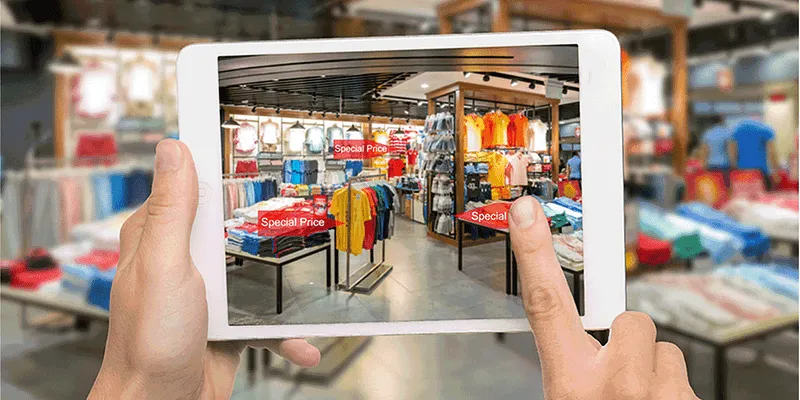The future is hybrid: 5 ways retailers can embrace smart commerce, according to Deloitte
Ecommerce has seen its heyday with the pandemic changing how people shop. But with life seemingly back to normal, blended commerce has become a necessity. A Deloitte report on smart commerce highlights some ways to optimise the move to blended commerce.
Over the last two years, COVID-19 became a huge catalyst for the growth of online commerce, even bringing in new users from non-urban India. The convenience, cheaper prices, accessibility, and an array of choices offered by ecommerce platforms remains unmatched by offline shopping.
The Indian ecommerce sector is expected to grow 21 percent annually over the next four years, a 2021 Global Payments report states, buoyed by an acceleration in digital adoption during the lockdowns. Retailers who haven’t undertaken technological transformations over the last two pandemic years are getting left behind — and the longer they take to digitise, the further back they fall.
With the world now seemingly returning to pre-COVID-19 life, a new hybrid commerce model is emerging that combines the power of online commerce backed by data analytics with offline stores, essentially helping them operate as a physical manifestation of their online experience.
, in its latest 'Sm@rt Commerce' report that outlines strategies for retailers, says organisations need to realise the benefits of ecommerce beyond just its ability to reach more people, and explore how data collated from being an online player can be used to serve customers better and optimise supply chains.
Startups vs legacy brands
Anand Ramanathan, Partner, Customer and Marketing at Deloitte, who has spent five years with the company, says legacy businesses need to consolidate their tech and IT, and essentially look at a more platform-as-a-business model to compete with their startup peers.
He says the reason was able to thwart competition from a legacy business like Titan Eye was that it harnessed the data collected online, and apply it offline.

Image source: Shutterstock
He draws an interesting parallel between startups and legacy businesses when it comes to product development.
"When it comes to creating and releasing new products, startups go from one to 10 in a matter of three months. They work on 10 products for three months and release them in the market as soon as they’re able to, fully expecting seven of them, for example, to fail. Legacy businesses, however, take three years to create 10 products they’re sure about — but there are failures even then, even if they aren’t as many. Still, by the time a legacy business gets to 10 products, startups have already iterated and failed several times over, but also hit the mark several times too," Anand explains.
“That culture of failing fast is necessary when it comes to digitisation commerce,” says Anand.
In the context of smart commerce, failing fast means using new technologies and tools that could help optimise an organisation’s overall performance, including supply chain optimisation, enhancing business and operating efficiency, using data to provide more value to customers, tapping new business lines that could maximise ROI (return on investment) and cut down redundancies, among others, and if the tech fails or doesn't work, moving on to the next available tool.
Key takeaways
Here are five quick takeaways from Deloitte’s report on smart commerce, and how businesses can set themselves up for success in this new age of hybrid commerce:
Using a multi-channel approach:
Smart commerce should go beyond just using online platforms to facilitate sales, says Deloitte. It should enable a platform view of an organisation (ie digitising all of an organisation’s processes and bringing them on one platform) and help stakeholders such as suppliers, customers and employees to engage in value creation.
That can be achieved by using cloud infrastructure, digital technologies, and intelligent analytics to create a data-driven organisation that is also customer-centric.

Providing several digital touchpoints
Deloitte says customers today are more inclined toward brands that can offer seamless offline-to-online experiences. To be able to operate in the new blended commerce environment, brands need to realign their sales strategies and focus on offering better experiences.
"Companies are harnessing digital technologies such as AI (artificial intelligence), ML (machine learning), beacon, and automation tools to transform their sales function. Tech advancements in sales processes can lead to lower costs to serve customers and higher revenues, and an opportunity to cross-sell other products due to an improved customer experience," the report says.
This could mean having multiple delivery and order fulfilment options, such as buying online, picking up from the store; hyperlocal delivery; and micro-fulfilment centres that reduce the time taken to deliver products.
Building digital capabilities
Deloitte says deploying in-store tools to automate operations and enhance efficiency by providing data insights such as real-time visibility of inventory, lead management, and customer relationship management can help businesses not only provide better services, but also gather inputs for understanding purchase patterns and improve store planning.
Personalising marketing communication
Personalisation is an important way to attract and retain customers, especially when it comes to online commerce. Using 360-degree customer profiles to build targeted and personalised marketing campaigns can help attract paying customers.
For offline, in-store activities such as contests, interactive product demos, service camps, and instant gratification offers such as discounts and cashback can also keep customers coming back for more.

Using smart pricing
"Pricing decisions have moved away from simple spreadsheets to complex AI/ML algorithms that calculate the optimal price based on a range of variables, such as demand, competition pricing, and customers’ willingness to pay," says Deloitte’s Sm@rt Commerce report.
Smarter pricing models can actually offer an improvement in gross margins than fixed pricing. Customers are willing to pay an incremental cost if brands offer personalised experiences and perks like faster deliveries, the report states.
Smart pricing, which depends on market dynamics, the price a customer is willing to pay, and the perceived value of goods and services, can help boost sales and conversions, as well as cultivate brand loyalty.
With the number of active internet users expected to hit 900 million by 2025, according to the Internet and Mobile Associaton of India (IAMAI), retailers and organisations that are more agile, are willing to embrace purposeful commerce, and look to serve their customers more personally, will stand to win in this new retail environment, ultimately.
Edited by Kanishk Singh




![[Startup Bharat] What helped Juicy Chemistry grow revenue 44% despite competition in the skin and hair care space](https://images.yourstory.com/cs/2/f49f80307d7911eaa66f3b309d9a28f5/JCInfographic-01-1649769323538.png?fm=png&auto=format&h=100&w=100&crop=entropy&fit=crop)





